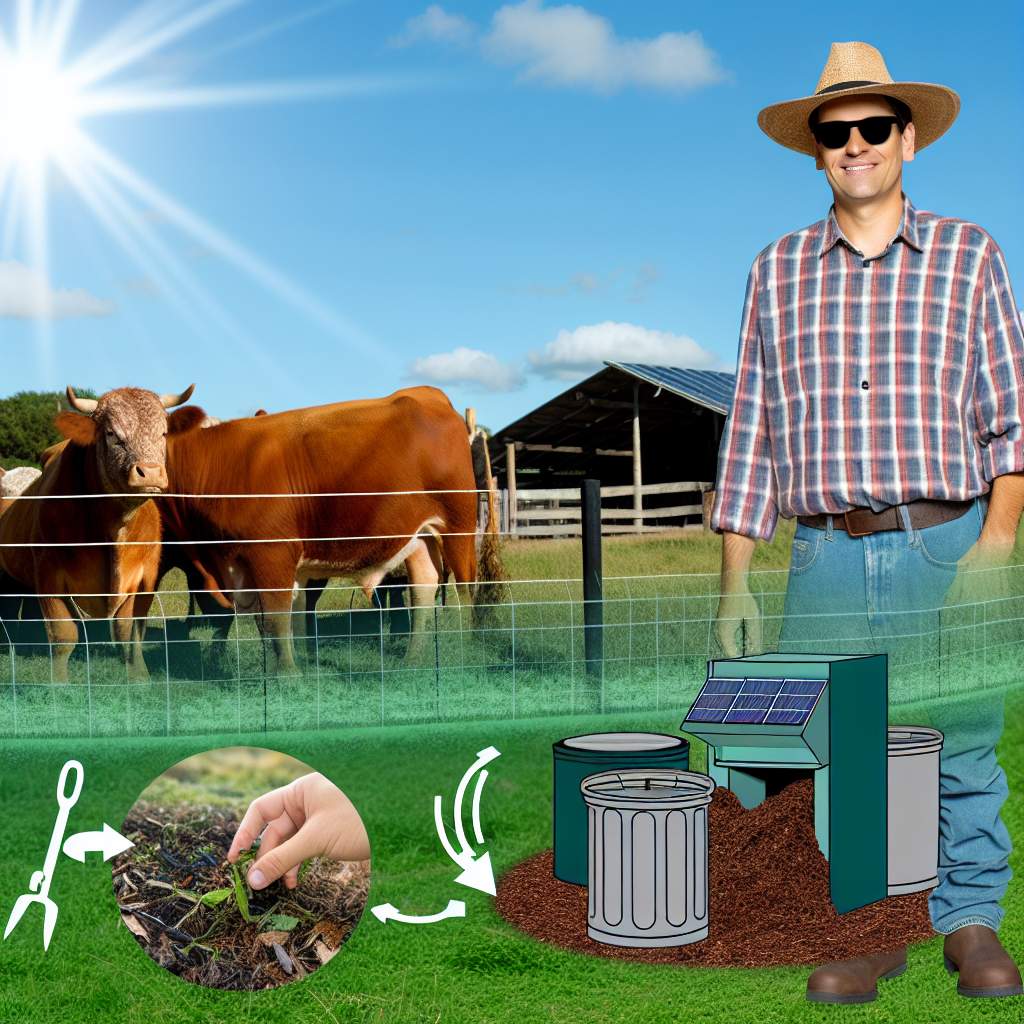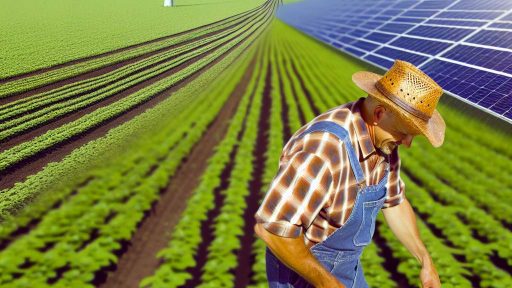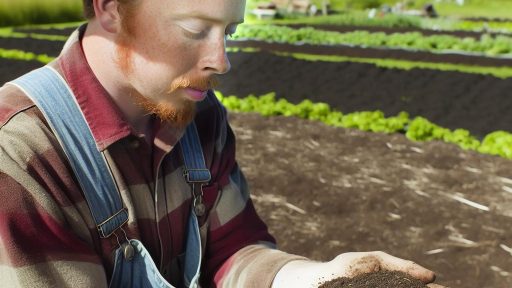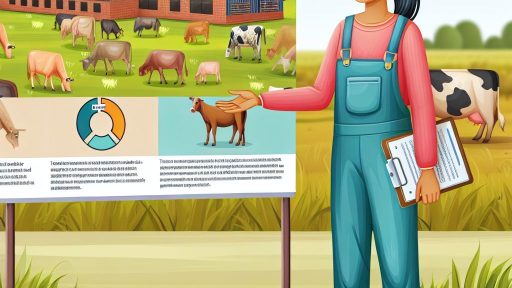Introduction to Sustainable Beef Cattle Farming
Sustainable beef cattle farming focuses on environmentally responsible practices.
This approach benefits both the planet and livestock welfare.
Farmers today face growing challenges to meet food demands.
Therefore, adopting sustainable methods becomes critical.
Importance of Sustainable Practices
Sustainable practices enhance ecosystem health.
They also reduce the carbon footprint of beef production.
In addition, these practices improve animal welfare standards.
Thus, they create a positive impact on rural communities.
Techniques for Sustainable Beef Farming
Rotational grazing promotes soil health and biodiversity.
By moving cattle frequently, farmers prevent overgrazing.
This method allows grasses to recover quickly.
Moreover, integrated crop-livestock systems enhance nutrient cycling.
Use of Cover Crops
Planting cover crops between grazing periods helps maintain soil integrity.
These crops prevent erosion and enhance soil fertility.
They also provide forage for livestock during winter months.
Transform Your Agribusiness
Unlock your farm's potential with expert advice tailored to your needs. Get actionable steps that drive real results.
Get StartedWaste Management Strategies
Effective waste management reduces environmental harm.
Composting livestock manure enhances soil quality.
Furthermore, it recycles nutrients back into the farming system.
Community and Economic Benefits
Sustainable beef farming supports local economies.
It encourages responsible land stewardship among farmers.
Communities benefit from healthier local food systems.
In fact, consumers increasingly prefer sustainably sourced beef.
Building Market Connections
Farmers can establish direct connections with consumers.
By participating in farmers’ markets, they share their practices.
This transparency fosters trust and loyalty among customers.
Education and Collaboration
Collaboration with agricultural extension services enhances knowledge sharing.
Farmers can learn about innovative practices and technologies.
Education ensures the longevity of sustainable farming initiatives.
Understanding the Environmental Impact of Conventional Beef Production
Deforestation and Land Use
Conventional beef production often leads to significant deforestation.
Large areas of forest are cleared to create pastures for cattle.
This activity disrupts ecosystems and wildlife habitats.
Moreover, it contributes to increased carbon emissions.
Water Consumption and Pollution
Beef production consumes vast amounts of water.
This includes water for cattle, feed crops, and processing.
Additionally, runoff from feedlots contaminates water supplies.
This pollution harms local ecosystems and public health.
Greenhouse Gas Emissions
The beef industry is a major source of greenhouse gases.
Cattle produce methane, a potent greenhouse gas.
Moreover, agricultural operations contribute to nitrogen oxide emissions.
Showcase Your Farming Business
Publish your professional farming services profile on our blog for a one-time fee of $200 and reach a dedicated audience of farmers and agribusiness owners.
Publish Your ProfileThese emissions exacerbate global warming and climate change.
Soil Degradation
Conventional grazing practices often lead to soil degradation.
Overgrazing removes vegetation cover and compacts the soil.
This erosion reduces soil fertility and increases runoff.
Thus, it threatens agricultural productivity and food security.
Biodiversity Loss
Beef production negatively affects biodiversity worldwide.
Land cleared for cattle reduces habitats for many species.
Additionally, the use of pesticides and fertilizers can harm local flora and fauna.
This decline in biodiversity can disrupt ecosystem balance.
Principles of Sustainable Ranching Practices
Enhancing Soil Health
Sustainable ranching focuses on enhancing soil health.
Healthy soil improves nutrient retention and water absorption.
Practices such as cover cropping and crop rotation are vital.
These methods enrich soil organic matter over time.
Water Conservation
Water conservation is another key principle of sustainable ranching.
Ranchers employ techniques to reduce water usage efficiently.
Implementing rainwater harvesting systems is a practical approach.
Additionally, using drip irrigation helps conserve water resources.
Biodiversity Promotion
Promoting biodiversity is essential for sustainable ranching.
Diverse plant and animal species create a balanced ecosystem.
This balance helps to prevent the spread of pests and diseases.
Integrating livestock with crops can enhance biodiversity on ranches.
Animal Welfare
Animal welfare is a crucial aspect of eco-friendly ranching.
Providing ample space and access to natural behaviors supports health.
Additionally, ethical treatment improves the quality of life for cattle.
This approach aligns with consumer demand for humane practices.
Waste Management
Effective waste management strengthens sustainable ranching practices.
Composting animal waste returns nutrients to the soil.
Preventing runoff into water bodies is also vital for environmental health.
Using waste as fertilizer reduces reliance on chemical inputs.
Community Engagement
Community engagement fosters collaborative ranching efforts.
Working with local organizations can enhance sustainability initiatives.
Sharing knowledge helps to build best practices among ranchers.
Moreover, supporting local markets strengthens the regional economy.
Learn More: Renewable Resource Utilization to Improve Farm Profitability
Rotational Grazing: Enhancing Soil Health and Pasture Growth
Understanding Rotational Grazing
Rotational grazing involves moving livestock between pastures.
This method prevents overgrazing and allows grass recovery.
As a result, pasture health improves significantly.
Moreover, it enhances the biodiversity of plants and soil organisms.
Benefits of Rotational Grazing
One major benefit is improved soil health.
Livestock manure returns nutrients to the soil.
Showcase Your Farming Business
Publish your professional farming services profile on our blog for a one-time fee of $200 and reach a dedicated audience of farmers and agribusiness owners.
Publish Your ProfileThis natural fertilization helps bolster plant growth.
Additionally, rotational grazing supports healthier grass ecosystems.
It reduces soil erosion by maintaining plant cover.
Implementing Rotational Grazing
To start, assess your ranch layout carefully.
Create multiple paddocks to facilitate livestock rotation.
Next, monitor the grazing patterns of your cattle.
Adjust the timing of rotations based on pasture recovery.
Use fencing to manage the movement of cattle efficiently.
Challenges and Solutions
One challenge is the initial setup cost of infrastructure.
Consider seeking grants or assistance from agricultural organizations.
Another issue might be managing livestock behavior during rotations.
Training sessions can help cattle adapt to new grazing patterns.
Patience and observation will yield successful results over time.
Long-Term Impact on Ranching
Over time, rotational grazing fosters a resilient pasture system.
This resilience combats drought and improves forage availability.
In turn, it enhances the overall sustainability of beef production.
Ultimately, it leads to a profitable and eco-friendly ranching operation.
Discover More: Creating a Resilient Food Forest Using Permaculture Practices
Integrating Agroforestry in Beef Cattle Farming
Benefits of Agroforestry
Agroforestry combines agriculture and forestry practices.
This approach offers numerous benefits to beef cattle farming.
It improves biodiversity on the farm.
Additionally, it enhances soil health and quality.
Furthermore, agroforestry provides shade and shelter for cattle.
As a result, animals experience reduced stress levels.
In turn, this leads to better meat quality and yields.
Implementing Agroforestry Practices
Farmers can implement various agroforestry practices effectively.
One effective method is alley cropping.
In alley cropping, trees grow alongside pasture or crops.
This method maximizes land utilization and resource efficiency.
Another practice is silvopasture, integrating trees with grazing areas.
Silvopasture provides forage, shade, and timber simultaneously.
Choosing the Right Tree Species
Selecting appropriate tree species is crucial for success.
Farmers should consider native varieties known to thrive.
Examples include willow and black locust trees.
These species enhance soil nitrogen levels.
Moreover, they’re resilient and adapt well to diverse conditions.
Managing Livestock with Agroforestry
Proper management ensures successful agroforestry integration.
Farmers should rotate cattle grazing areas frequently.
This prevents overgrazing and promotes healthy forage growth.
Additionally, monitoring tree growth is essential.
Showcase Your Farming Business
Publish your professional farming services profile on our blog for a one-time fee of $200 and reach a dedicated audience of farmers and agribusiness owners.
Publish Your ProfileHealthy trees provide ample shade and forage.
Moreover, farmers may need to protect young trees from cattle.
Challenges and Solutions
Integrating agroforestry poses some challenges for farmers.
Common issues include competition for resources.
To address this, farmers can selectively thin tree stands.
This promotes growth for both trees and grasses.
Additionally, understanding local ecosystems aids in planning.
Conducting soil tests can inform planting decisions.
Such strategies lead to a sustainable and productive system.
See Related Content: The Impact of Precision Agriculture on Soil Erosion and Conservation
Utilizing Cover Crops for Improved Nutrient Management
Benefits of Cover Crops
Cover crops play a significant role in sustainable farming practices.
They enhance soil fertility by fixing nitrogen through their root systems.
Moreover, these crops help prevent soil erosion during off-seasons.
Additionally, cover crops improve soil structure and water retention.
This leads to healthier pastures for the cattle and better yields.
Types of Cover Crops
Diverse cover crops can be beneficial for nutrient management.
Legumes, such as clover and peas, are excellent for nitrogen fixation.
Grasses, like rye and oats, can enhance soil structure and organic matter.
Brassicas, such as radishes, can help break compacted soil layers.
Farmers should select cover crops based on their specific soil needs and climate.
Integration with Beef Cattle Farming
Integrating cover crops can significantly enhance cattle nutrition.
These crops provide additional forage for grazing during the winter months.
Furthermore, cover crops can boost biodiversity in the ecosystem.
This improves pest control and reduces the need for chemical inputs.
Additionally, cover crops can improve manure management by increasing nutrient cycling.
Implementation Strategies
Implementing cover crops requires careful planning and management.
Farmers should begin by assessing their current crop rotation practices.
They can then choose suitable cover crops that fit within their system.
Integrating cover crops can be achieved through no-till or reduced-till practices.
Monitoring soil health and cattle performance is crucial for success.
Find Out More: Renewable Resource Utilization for Energy-Efficient Farming

Water Management Strategies for Sustainable Cattle Farming
Importance of Water Conservation
Water conservation is critical in sustainable cattle farming.
It reduces operational costs and boosts farm sustainability.
Farmers can adapt to changing climate conditions effectively.
Moreover, it helps maintain local ecosystems and wildlife habitats.
Efficient Irrigation Techniques
Utilizing efficient irrigation techniques improves water usage.
Drip irrigation delivers water directly to plant roots.
This method minimizes evaporation and runoff significantly.
Laserscaping involves using drought-resistant plants in pastures.
Both approaches save water and enhance soil health.
Showcase Your Farming Business
Publish your professional farming services profile on our blog for a one-time fee of $200 and reach a dedicated audience of farmers and agribusiness owners.
Publish Your ProfileWater Harvesting Systems
Implementing water harvesting systems is highly beneficial.
Collecting rainwater from rooftops reduces dependence on groundwater.
Storing this water helps during dry spells.
Farmers can also consider creating small ponds for storage.
Monitoring and Managing Water Use
Regular monitoring of water usage allows for better management.
Using smart meters provides real-time data on consumption.
Farmers can adjust practices based on accurate information.
Moreover, scheduling irrigation based on weather forecasts optimizes use.
Educating the Community
Educating the farming community promotes best practices.
Workshops and seminars can increase awareness of water issues.
Sharing successful strategies among farmers fosters collaboration.
Communities can develop collective water conservation goals.
Regulatory Compliance and Incentives
Understanding regulatory requirements is essential for farmers.
Government programs often provide financial incentives for conservation.
Participating in these programs enhances farm sustainability.
Staying informed about local regulations ensures compliance.
Reducing Carbon Footprint
Feed Efficiency and Dietary Adjustments
Implementing feed efficiency improves resource usage in ranching.
Using high-quality feed can significantly boost cattle growth.
Properly balanced nutrition increases weight gain and milk production.
Less feed waste contributes to a lower carbon footprint.
By optimizing feed ingredients, ranchers can reduce greenhouse gas emissions.
High-energy diets are crucial for sustainable beef production.
Alternative Feed Sources
Exploring alternative feed options can enhance sustainability.
Incorporating forages and grains lowers reliance on traditional feed sources.
Diversifying feed helps minimize environmental impact.
Some farmers use by-products from other agricultural industries.
This method reduces waste and creates a circular economy.
Precision Feeding Techniques
Precision feeding tailors nutrition to individual cattle needs.
This approach maximizes feed efficiency and reduces waste.
With this technique, farmers can monitor cattle growth closely.
Data-driven decisions lead to optimized feeding strategies.
Technology aids in assessing cattle performance accurately.
Long-Term Dietary Planning
Year-round dietary planning supports consistent cattle growth.
Adjusting handouts with seasonal changes aids nutrient management.
Maintaining a rigorous plan minimizes the use of supplements.
Long-term strategies ensure stable production and sustainability.
Farmers focusing on sustainable practices foster environmental health.
Community Involvement and Education in Sustainable Practices
The Role of Local Communities
Local communities play a vital role in sustainable beef cattle farming.
They actively engage in promoting eco-friendly practices.
Furthermore, community members work together to share knowledge.
Showcase Your Farming Business
Publish your professional farming services profile on our blog for a one-time fee of $200 and reach a dedicated audience of farmers and agribusiness owners.
Publish Your ProfileThis collaboration enhances the agricultural techniques used on ranches.
Education Programs and Workshops
Educational programs are essential to inform farmers about sustainable practices.
Workshops deliver hands-on training on sustainable methods.
For instance, sessions can cover rotational grazing and soil health management.
These workshops often encourage participation from local universities.
As a result, aspiring farmers can gain valuable insights and skills.
Partnerships with Environmental Organizations
Collaboration with environmental organizations amplifies educational efforts.
These partnerships often lead to innovative sustainability projects.
Programs may focus on habitat restoration and biodiversity conservation.
Moreover, they promote efficient water management strategies.
Such initiatives can help secure funding for local ranchers.
Promoting Sustainable Practices through Social Media
Social media serves as a powerful platform for sharing knowledge.
Ranchers can showcase successful sustainable practices online.
This promotes transparency and inspires others to adopt similar strategies.
Additionally, social media can facilitate virtual workshops and discussions.
Consequently, a wider audience can benefit from shared information.
Building a Supportive Network
Establishing a supportive network is crucial for sustainable ranching.
Farmers can connect with peers to discuss challenges and solutions.
Local agricultural groups frequently organize regular meetings.
These gatherings foster a sense of community and shared purpose.
Such networks often create mentorship opportunities for new ranchers.
The Future of Eco-Friendly Ranching
Innovative Practices
Innovative practices will transform eco-friendly ranching in the coming years.
Farmers will adopt new technology to improve efficiency.
Techniques such as precision grazing will enhance land health.
Additionally, agroforestry will integrate trees into beef production.
This approach boosts biodiversity while providing shade and shelter for cattle.
Community Engagement
Community engagement will play a crucial role in sustainable ranching.
Local farmers will collaborate to share best practices.
Workshops and training programs will drive innovation.
Furthermore, consumers will become more aware of sustainable practices.
This awareness will create a demand for eco-friendly beef products.
Regenerative Practices
Regenerative practices will gain popularity among ranchers.
These techniques focus on restoring soil health and biodiversity.
Farmers will implement cover cropping to enhance soil fertility.
Moreover, rotational grazing will help prevent overgrazing.
The result will be healthier cattle and ecosystems.
Policy Support
Policy support will be vital for the future of eco-friendly ranching.
Governments will need to incentivize sustainable farming practices.
Subsidies and grants can assist farmers transitioning to greener methods.
Additionally, research funding will promote innovation in sustainable agriculture.
Showcase Your Farming Business
Publish your professional farming services profile on our blog for a one-time fee of $200 and reach a dedicated audience of farmers and agribusiness owners.
Publish Your ProfileThrough supportive policies, eco-friendly ranching can thrive.
Education and Awareness
Education will be key in shaping future eco-friendly ranching efforts.
Farmers and consumers alike need access to relevant information.
Schools and universities can play a significant role in education.
Programs focused on sustainability will encourage new generations of farmers.
Informed consumers will drive the market towards sustainable options.




